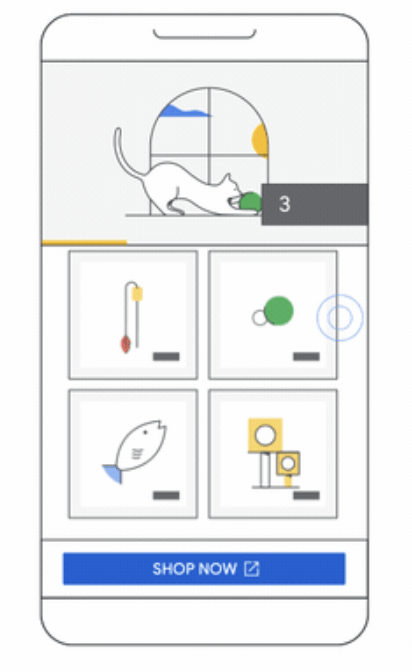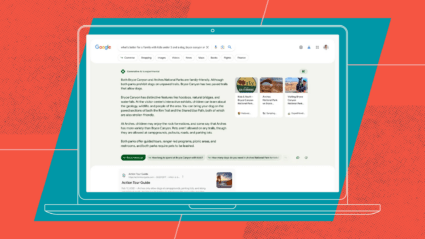Let’s say you’re looking for the perfect pair of white sneakers from a new brand you’ve heard about. Where do you turn first?
Many people go straight to the Google search bar, of course. When you’re looking for all the details you’ll need to decide whether or not to buy, like price, sizing, and reviews, there’s nowhere better to get that information than in the search results.
Search is a key component of any marketing strategy, but it’s especially crucial for fashion retail brands. Customers have to sift through a crazy range of options, across apparel, shoes, and accessories, and they’re often looking to compare different brands’ prices and styles before making the final call.
To compete, your brand needs to stay in that consideration set; to win, you need to show up at the top of the SERPs for keywords relevant to that purchase decision so your website is easy to find for returning customers and new ones alike.
That’s where Google’s AI-powered Performance Max (PMax) campaigns offer an indisputable advantage; it’s the most powerful search advertising tool currently in the market, which creates and tests hundreds of unique combinations of your copy, image, and video assets to zero in on the most effective possible versions.
But even a tool as amazing as PMax can’t do everything for you—you’ll need the right strategies to build, optimize, and scale your campaigns for maximal impact, especially in the hyper-competitive fashion retail category. That’s where we can help!
Structuring your PMax campaigns for success
Any good advertising campaign starts with a well-thought-out plan, and PMax is no different. Your campaign structure is especially important because you need to make sure the powerful AI that runs all of your PMax campaigns is set up to deliver the best possible results.
Just because PMax is powered by AI does not mean it’s a set-it-and-forget-it campaign.
There are lots of ways to structure your PMax campaign, but some of the most important factors to consider are profitability, product types, budgets, and bid strategy targets. Some of our favorite tactics include:
- Setting up bid strategies and bidding levels (like target CPA or target ROAS) based on your top-performing vs. lowest-performing product groups
- Breaking your campaign structure out by product type to ensure you have the appropriate bid and creative for each category. For example, you could have different campaigns for joggers and leggings vs. t-shirts and polos
- Building your structure around profitability so you get the most visibility into products that drive the most profit. For example, you can have a separate campaign for products with a gross margin of 60% vs. products with a gross margin of 40%
This isn’t a hypothesis; it really works. We implemented a better PMax campaign structure for REEF, driving a 131% increase in revenue.

To get the most out of your PMax efforts, you can also separate your account into two main campaigns: brand vs. nonbrand. Since PMax doesn’t allow advertisers to target specific keywords, these categories can give you more control over your budget. Nonbrand campaigns won’t be able to bid on brand terms (although the brand campaign can still bid on nonbrand terms), so you can make sure your spend is going to the right place to drive the most incremental impact.
Here’s how it works: make one campaign your nonbrand campaign by negating your brand terms, then run your brand campaign with a higher ROAS target or lower CPA target to force it to be more efficient with its budget than the nonbrand campaign. With those differentiated categories in place, you may see a higher incrementality from nonbrand, but better profitability from brand.
Don’t forget to keep your business priorities and sales targets in mind when planning your campaigns too. For example, if a fashion brand is pushing inventory from a new collection, it’s a good idea to prioritize that so it’s not overshadowed by other topics. They can break out the products in this new collection into a separate campaign with looser performance targets to ensure the products get increased visibility, then later fold them into the current campaign structure.
Once you’ve set up your overall campaign structure, you can add elements to make it even better, like images to illustrate your product and lifestyle creative to showcase how the product is worn/used. You can also optimize your feed continuously by testing different ad copy, brand name placement, and more.
Optimizing your search strategy to win
After you’ve structured your campaign, it’s time to dial in on your search strategy. A big part of that is optimizing keywords: brand, nonbrand (descriptive keywords that don’t include the brand or product names), and product keywords are all important.
Product keywords are a good place to start since you can tailor them to the user experience by creating a product ad and a product page for individual items. You should write unique copy specific to that item for each product ad and landing page that includes those product keywords.
You can also try out different ways of featuring your products via pages to see what works best for your audience. In particular, you should be testing product description pages (PDPs) featuring a specific product against collection pages, which include an entire product category. For example, if you’re selling shoes, a PDP might have one sneaker with an option to select the size, while the collection might show all tennis shoes available on your site. It’s worth figuring out which kind of page works for your brand or for a specific category of product before creating pages for every item you sell.
You need to make sure you’re spending your budget where it will make the biggest impact. Wpromote stops overlapping spending on terms by using Ad AI, a third-party AI tool that blocks the brand from spending on brand terms where products are already appearing organically so you can reinvest those dollars somewhere they’ll actually make a difference.
Scaling your strategy to social media and beyond
It might come as a surprise, but search itself is only one piece of the puzzle when it comes to maximizing your PMax success. To get more customers’ eyes on your brand, you need to look beyond the SERP.
Social can be a key awareness driver that often inspires prospective customers to go to the search bar to learn more about a brand or product. Of course, these behavioral patterns aren’t set in stone; in fact, many consumers are searching for products on social media platforms like Reddit and TikTok, not just Google, which is a good reminder to consider the customer journey holistically and plan accordingly.
To make the most of the synergies between social and search, you need to understand flighting patterns and align your budgets when you’re dropping new collections. Searches for your products may go up after you boost awareness on social; for example, on day one of a sale it might make sense to index higher on social, then spend more on search later on, since customers will begin to look further into your brand once they’ve seen you on social media.
A good place to start on social is YouTube, which pairs well with Google search because they live in the same Google ecosystem. You can target audiences with ads on Gmail, the Google Discover page, and the YouTube homepage based on browsing behavior in Google.
Try leveraging product feeds within your YouTube campaign. Product feeds appear as a separate section at the bottom of the video player during YouTube ads and can act as a shoppable companion to your video ads, driving customers straight to your site by giving them an easy way to find what they’re looking for.

Source: Google
You should also prioritize influencer and user-generated content on TikTok and YouTube shorts to drive awareness by capitalizing on creators’ authenticity and connection with their audiences; this content can be especially effective for fashion and retail brands.
In addition to social media strategy, you should always keep your retail business in mind when launching PMax campaigns. If you’re selling on other websites, like Amazon, you need to establish governance rules so you aren’t competing with your own products sold on other platforms. If Google recognizes these brands as competitors in the auction, they’ll drive your CPCs up.







Responses